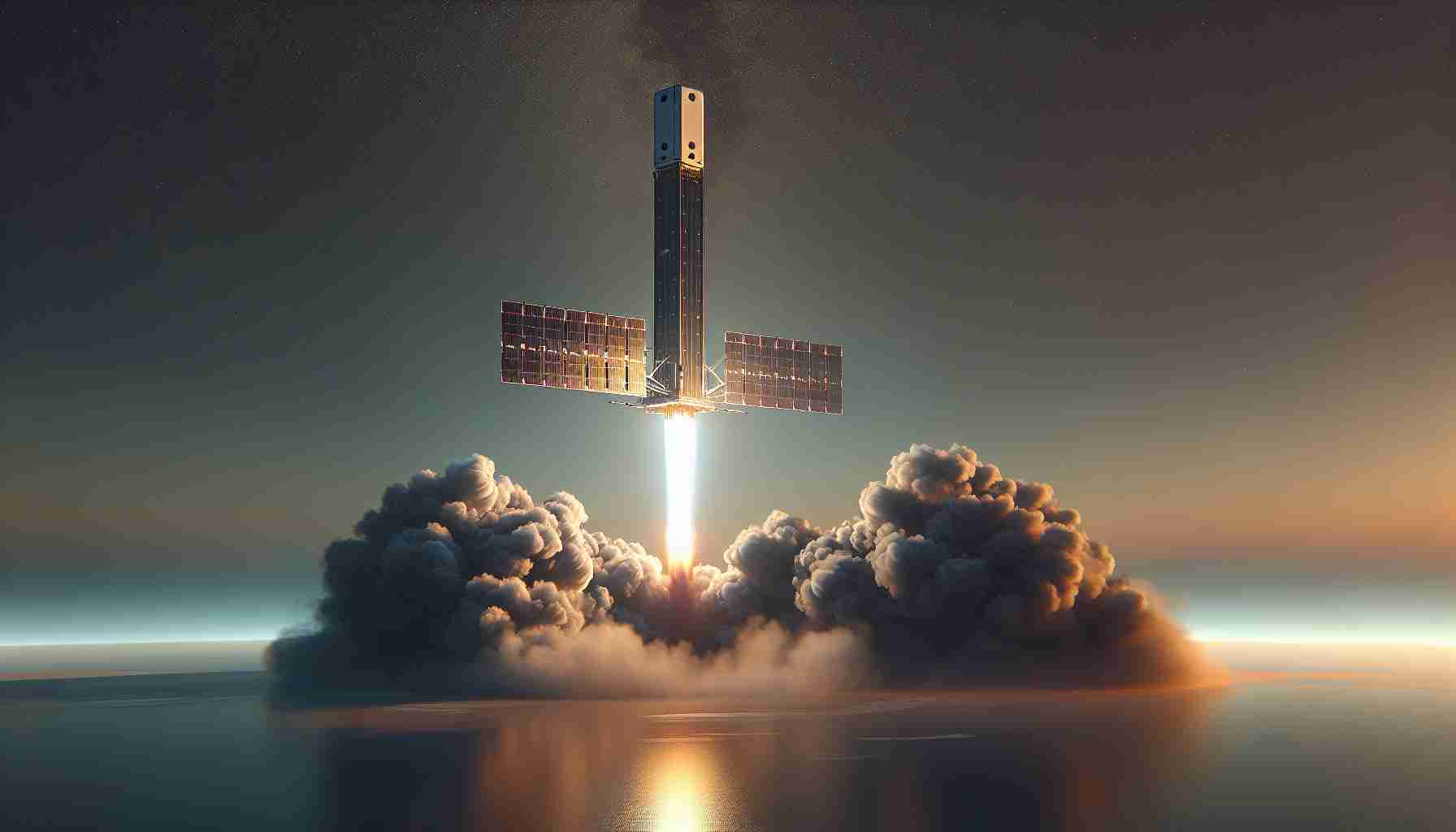
Eutelsat, a leading satellite operator, recently completed the launch of 20 new satellites using SpaceX’s Falcon 9 rocket from Vandenberg Space Force Base in California. This mission marks Eutelsat’s inaugural satellite deployment since the merger with the British company OneWeb, finalized last September.
The combined entity now operates over 600 low Earth orbit satellites, primarily serving broadcasters, telecommunications companies, and radio stations across the globe. The CEO of Eutelsat, Eva Berneke, highlighted that this launch represents a significant step for the company and promised additional launches will follow in the coming years.
Eutelsat aims to integrate more into the telecommunications ecosystem, where it sees satellites as a complementary service to traditional connectivity offerings. The company already collaborates with major telecom firms like Orange in France and Telstra in Australia, and it is currently exploring partnerships with others, including AT&T in the U.S.
Additionally, Eutelsat is optimistic about the future, particularly in markets such as India and Saudi Arabia. The potential growth in these regions could lead to substantial revenue increases once regulatory barriers are lifted. As Berneke stated, Eutelsat is keen to capitalize on new opportunities in the aviation sector as well, with plans for in-flight connectivity services expected to launch soon.
Eutelsat Takes to the Skies with New Satellite Launch: Transforming Global Connectivity
Eutelsat, a prominent player in the satellite communications sector, has recently marked a significant milestone with the successful launch of 20 satellites using SpaceX’s Falcon 9 rocket. This launch serves as a pivotal moment following Eutelsat’s merger with OneWeb, which together manages an expansive fleet of over 600 low Earth orbit (LEO) satellites. The implications of this launch extend beyond mere numbers; it signifies Eutelsat’s strategic shift towards becoming a major telecommunications provider.
Key Questions and Answers
1. What are the primary objectives of Eutelsat’s latest satellite launch?
The primary objectives include enhancing broadband internet accessibility, improving connectivity in underserved regions, and expanding business opportunities across diverse sectors such as aviation and maritime.
2. How does Eutelsat plan to ensure a competitive edge in the satellite industry?
Eutelsat aims to innovate through integration with telecom services, forming partnerships with leading firms, and focusing on next-generation technologies like 5G integration.
3. What markets does Eutelsat view as the most promising?
Eutelsat is particularly interested in the burgeoning markets of India and the Middle East, where regulatory constraints are gradually easing, presenting opportunities for significant growth.
Challenges and Controversies
Eutelsat faces several challenges, including:
– Regulatory Hurdles: Navigating differing regulations across jurisdictions can pose obstacles to rapid deployment and access to new markets.
– Environmental Concerns: Increased satellite launches raise concerns about space debris and the environmental impact of rocket launches. Advocates for sustainable space practices are calling for stricter guidelines.
– Competitive Landscape: The satellite communications market is intensifying, with competitors like Starlink and Amazon’s Project Kuiper pushing the boundaries of technology and service offerings.
Advantages and Disadvantages
Advantages:
– Global Connectivity: The new satellite fleet will significantly enhance internet accessibility in remote and underserved areas, bridging the digital divide.
– Diverse Applications: Eutelsat’s services are not limited to internet connectivity; they extend to broadcasting, maritime, aviation, and disaster response, creating various revenue streams.
– Technological Innovation: Continuous investments in technology and collaboration with telecoms can lead to superior service offerings.
Disadvantages:
– High Costs: Launching and maintaining satellite networks involves substantial financial investment, which can affect profitability in the short term.
– Space Debris Concerns: Increased satellite deployments contribute to the growing issue of space traffic management and debris, which can jeopardize existing satellites and future missions.
– Consumer Skepticism: Potential clients may remain skeptical about satellite internet’s reliability and performance compared to traditional broadband options.
In summary, Eutelsat’s latest satellite launch ushers in a transformative era for global connectivity, with promising potential to impact various sectors positively. However, navigating the complexities of regulatory frameworks, environmental sustainability, and market competition will be critical for sustaining their trajectory of growth.
For more information on Eutelsat and their initiatives, visit Eutelsat.



